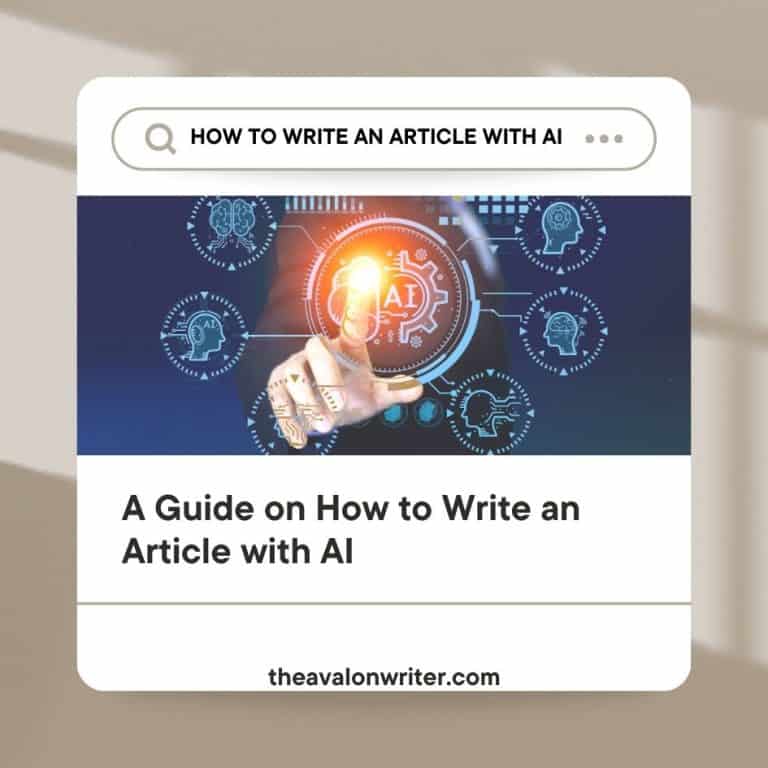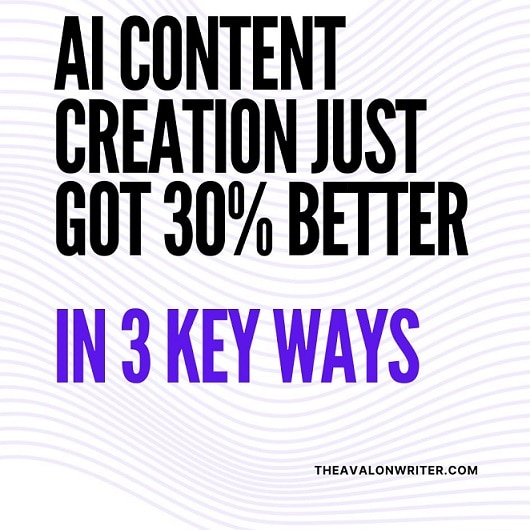Guide To Choosing The Right AI Writing Assistant For Your Needs

What should I look for when choosing the right AI writing assistant?

- Identify your main writing needs – idea generation, grammar correction, content creation, etc. Look for a tool specialized in those areas.
- Evaluate key features like accuracy, integration with other platforms you use, customization options, privacy policies, support response times, and the ability to scale with your future growth.
- Test free trials with your own documents to check performance before purchasing. See how suggestions integrate into your existing workflows.
- Opt for an assistant tailored to your industry and the types of content you regularly write. Avoid general writing aids. Specialization is more effective.
- Choose a solution that feels perfect to maximize productivity gains by addressing your unique pain points. The right assistant should make writing easier in your workflow.
Introduction to Choosing the Right AI Writing Assistant
Need a Writing Hand? There are plenty of AI Assistants out here to help
AI-powered writing assistants have exploded in popularity recently. And for good reason – these tools help writers craft everything from emails to blog posts in a fraction of the time. With an AI assistant, you can transform your writing process.
These clever assistants act like extra hands, offering real-time spelling, grammar, style, and recommendations. Some can even generate whole passages of content for you. The capabilities are impressive.
This article will guide you in finding the right AI writing assistant to match your needs. We’ll explore the key factors to think about, from features and integrations to customization options. Follow along to find your perfect writing partner!
The goal is to keep things simple and conversational while quickly establishing the benefits of AI writing assistants. Please let me know if you want me to modify or expand the introduction further!
Know what you need the AI Writing Assistant for!
Creating compelling, high-quality content involves several key steps. While the writing is central, planning and editing play pivotal supporting roles.
Many writers struggle with the following:

- Generating fresh ideas consistently
- Proofreading properly to catch all errors
- Structuring content logically for the audience
- Finding time for tedious editing duties
These pain points slow down overall production. They drain time and energy that could be better spent crafting amazing content.
An AI writing assistant helps address these needs through features like:
- Idea generation to discover new topics
- Error checking to perfect grammar and style
- Outline creation to map content flow
- Editing support for polished drafts
Carefully determining the level of support needed in each area allows customizing the AI assistant’s involvement. Building this understanding upfront ensures it augments the unique aspects of your writing approach.
The goal is to target where AI tools excel – taking work off your plate that’s less creative to let you focus on expressing your ideas effectively.
Key Features To Look For in an AI Writing Assistant
When evaluating AI writing assistants, I prioritize tools that make my life easier. The best ones check for document issues and help me improve my writing abilities over time.
Top features I look for:
- Intuitive interface that’s simple to use and easily accessible within my existing workflows. I want to see suggestions on-screen as I write with minimal clicks.
- Accurate identification of grammar, spelling, and style issues. This precision allows me to catch things I may miss in self-editing.
- Readability metrics show how complex or advanced my writing is. This data helps guide word choice and sentence structure for the target reader.
- Tone adjustment capabilities that I learn from my previous documents. Maintaining brand and brand tone consistency in this way is invaluable.
Content analytics will assess engagement and areas to refine. I leverage this to optimize content quality going forward based on real data.
How to Evaluate AI Writing Tools
With so many AI tools available, narrowing down the top contenders takes some diligent analysis.

I always start by vetting both free and paid versions by:
- Testing accuracy on documents with existing errors to check suggested corrections.
- Submitting various content types like blog posts, emails, and social media captions. Performance may vary across use cases.
- Exploring integrative plugins for my other platforms like CMS or Google Workspace. I don’t want to leave my workflow to utilize the tool.
Accuracy and integration capabilities reflect the development resources behind premium AI writing tools. However, free options can still provide utility depending on needs. Trying out the tools will give balance and a better position to make a decision before paying for one.
Additional Factors to Evaluate When Selecting an AI Writing Tool
When deciding on an AI writing aide as a content creator, a few additional considerations come into play based on my experience:
Privacy Matters
As a blogger, many drafts contain confidential company information or content directions still in development. Cloud-based AI tools should detail encryption methods and authorization policies regarding document access.
Reliable Support
Tight deadlines as a marketing writer means little tolerance for platform issues. Prioritizing availability via live chat and prompt email turnaround provides peace of mind. Average response times beyond 24 hours are too slow in time-sensitive creative environments.
Ongoing Learning Opportunities
With AI capabilities constantly evolving, continuing education helps me maximize evolving product features. For example, a webinar first introduced me to new auto-generated content modules – now I leverage them for quick social media drafts.
Flexible Growth Plans
There’s nothing worse than an assistant struggling to scale with rapid content demands. As a blogger reaching close to 1 million monthly visitors, I require an enterprise-level tool ready for further expansion as needs increase. Paying higher rates is worthwhile to avoid limitations.
Try the AI Writer Before Buying
Rather than committing long-term to an AI writing assistant, initially take advantage of free trials available. For example, Grammarly offers a 7-day free trial of their premium product. This allows testing the tool’s suggestions against real writing samples.
When evaluating during the free trial period, I upload different types of documents that represent my normal writing. This might include publishing samples like articles, social media posts, and email newsletters for a blogger. This testing with real-world examples showcases how an assistant might perform with your specific writing style and content types.
Additionally, explore authentic user reviews. Dimensional Research found that 92% of people read online reviews before making purchases. Videos and blog posts detailing hands-on experience build trust and confidence in making the buying choice.
Additional Tips to Help Make Your Decision
According to Juniper Research, the writing assistant market is projected to reach $20 billion by 2030, showing growth that will enable many options. With expanding choice comes potential paralysis in deciding which solution best fits your budget and addresses top needs.
Start by calculating the potential return on investment and how much time or money a tool could save in the content creation process. Determine if the productivity software has the capability to scale and future-proof against business growth.
Also examine free trial performance weighed against top feature priorities. An accuracy level of at least 95% should be acceptable. But also compare how seamlessly corrections integrate into individual workflows.
Initially contract month-to-month subscriptions while evaluating instead of annual locks. This provides more flexibility to switch tools if early testing underdelivers on expectations.
Choosing Between General and Specialized AI Assistants
AI writing tools fall into two main categories – general aids & specialized assistants:
• General tools help with common writing needs like fixing spelling, grammar, or awkward sentences. They work well for basic documents.
• Specialized assistants cater to certain industries using custom vocabularies and writing formats. For example, an AI trained in medical terminology assists in healthcare content creation.
Consider if industry-specific features are needed before deciding. Unique vocabulary and formatting come with a steeper learning curve vs. general writing enhancement.
Capabilities For Different Content Types
AI writing assistants have become specialized to meet different needs. A blogger requires tools optimized for composing articles and long-form content. The key features are grammar correction, stylistic editing, and crafting engaging opening paragraphs.
On the other hand, a social media manager needs an assistant focused on microcontent creation. Useful capabilities include draft generation for tweets or posts, analyzing engagement metrics, and recommending relevant hashtags.
Beyond business use cases, creative writers demand tools to enhance fictional narrative development, poetic techniques, realistic dialogue, and artistic style.
The key is identifying your writing challenges first. Carefully analyze where you struggle with generating ideas, proper formatting, or tedious editing. Then, explore purpose-built tools to address those pain points and streamline workflows.
Rather than using a general writing aide, find an assistant specialized for how you write daily. Match the AI capabilities to the types of content you regularly produce. This tailored approach delivers the best results by boosting productivity in the areas you need most.
Content Generation and Brainstorming
The most advanced AI writing tools move beyond editing to generating initial content drafts. Key features include:
- Outline creation based on a topic prompt
- A paragraph or page-length passage created on a given subject
- Expanding bullet point notes into full sentences and text
Automated ideation and creation tools significantly enhance productivity, but quality currently varies. As the underlying AI continues advancing, such generative abilities will keep improving.
Conclusion: Find Your Perfect Writing Partner
Crafting exceptional content requires more than creativity – it takes tools that enable imagination to flourish. AI writing assistants empower you to write faster, smarter, and more consistently by providing that extra support.
As discussed, the key is identifying areas where you struggle most, then matching those needs to the strengths of different solutions. Carefully compare features, accuracy, customizability, and integration capabilities that map to your goals. Make use of free trials to for firsthand experience with your own style and documents.
By outlining your own requirements and meticulously evaluating options against them, you can find the AI writing assistant that feels made just for you. The right fit will boost productivity, creativity, and confidence in expressing ideas to any audience. Don’t settle for less than your perfect writing partner.






